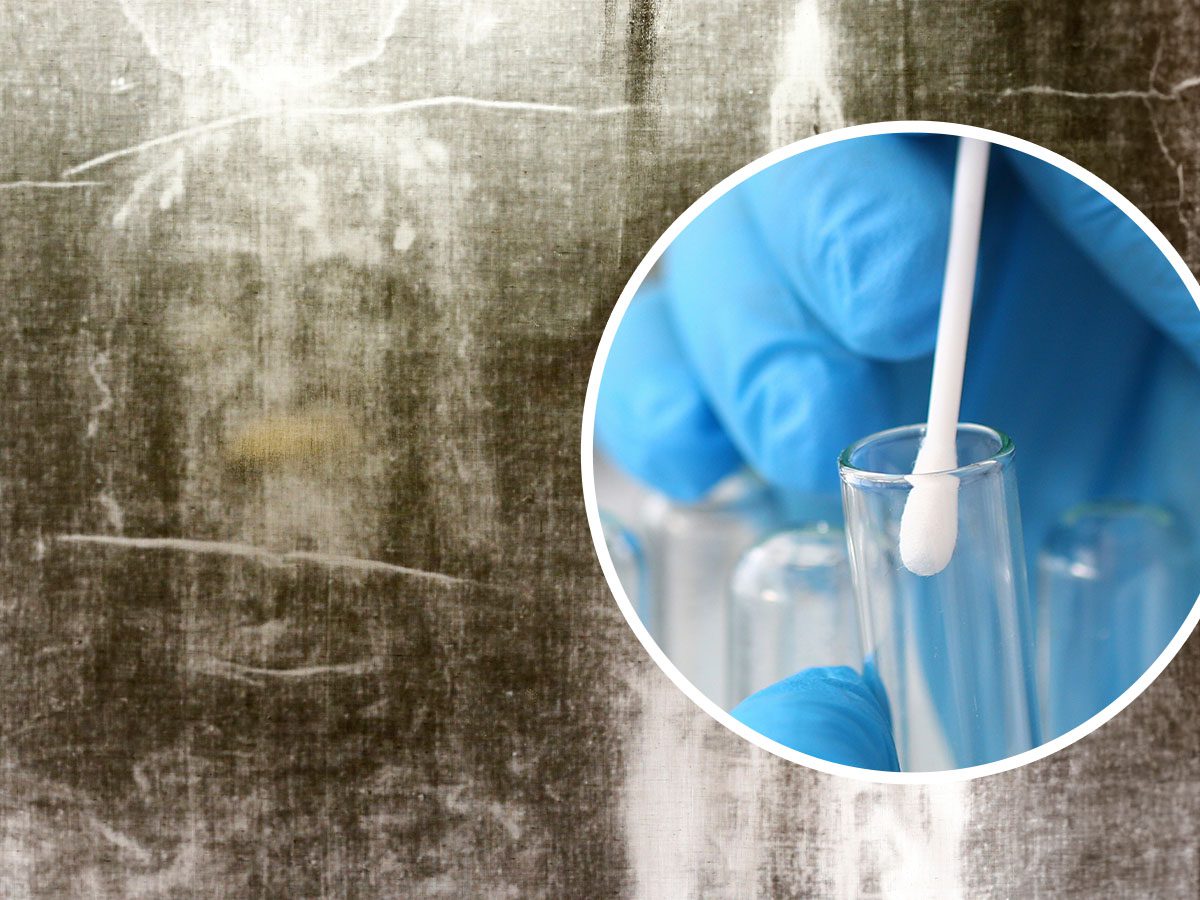
A new Italian study on the Shroud of Turin has revealed that the dark stains on the shroud, attributed to being blood stains from the body of Christ, have a pattern consistent with the types of injuries Jesus sustained as described in the Bible. Giulio Fanti, a professor of mechanical and thermal measurements at the University of Padua, who has published books on the Shroud as well as been the author on over 50 studies of the holy relic, used macroscopic and microscopic analyses of the bloodstains. According to Fanti, bloodstains on the front and side of the Shroud reveal blood flow from three different directions. The blood appears to have flowed at a horizontal position, consistent with a corpse laying on its side, in a vertical position consistent with a body in the upright position such as when Christ was on the cross, and at a 45-degree angle.
There are also three colors of blood stains: pre-mortem blood stains that would likely have occurred while on the cross, some that appear to be “post-mortem” and could have occurred from moving the body such as from cross to tomb, and “leaks of blood serum.” “There are hundreds of reddish spots of varying shapes and sizes from centimeters to a few decimeters, which almost completely overlap the body image imprinted on it and which seem perfectly consistent with the different types of torture suffered by Jesus, who was wrapped in it as a corpse,” Fanti wrote in the report.
High levels of creatinine found in the blood “generally indicates a heavy polytrauma [severe injuries in multiple locations],” Father Robert Spitzer, president of the Magis Center of Reason and Faith told Catholic News Agency. The Bible describes Jesus experiencing a number of injuries, including beatings, scourging (a whipping that ripped the flesh from his body), the placement of the crown of thorns on his head, being nailed to the cross, and stabbed in the side. “He had undergone real tortures. …You can tell that he lost a tremendous amount of blood … especially from the whipping — the scourging that he received,” said Spitzer.
The study contradicts a 2018 study that claimed the bloodstains were faked, most likely by a medieval forger. The study utilized forensic techniques on the blood stains and determined that many were unrealistic or inconsistent with Christ’s wounds. Spitzer, however, pointed to the blood data to push back against such “medieval forger” claims. “[A medieval forger] certainly would not have used the hematic serum of a victim who experienced a heavy polytrauma,” he said. Another study recently challenged claims that the cloth dated from medieval times rather than the days of Jesus. According to the study, which utilized x-rays, the Shroud could be dated to a much earlier time, as far back as the days of Christ. Other studies have shown that the flax used to make the linen of the Shroud comes from the Middle East. Professor Liberato De Caro, who utilized x-rays in his study, stated the technique was far more effective because it was “non-destructive” and could be repeated. “Science can take us only to a certain point,” he said. “Everything beyond that is a matter of faith.”


